This is the eighteenth post in a series of tests of the Fujifilm GFX 100, Mark II. You can find all the posts in this series by going to the Categories pane in the right hand panel and clicking on “GFX 100 II”.
In the previous post, I looked at the visual shadow noise of the GFX 100 II at ISOs 80, 400, and 500. The camera changes to high conversion gain at ISO 500, and should be fairly ISOless above that. Let’s take a look and see.
I mounted a 110 mm f/2 Fuji GF lens on the GFX 100 II, put the camera on a RRS tripod and C1 head, used manual focus, and set an exposure that by the camera’s metering system, was 6 stops down from normal.
The rest of the particulars:
- ISO 500, 1000, 2000, 4000, 8000
- IBIS off
- 16 bit precision
- f/8 at 1/100 second
- EFCS
- Single shot drive mode
- Same exposure for each
Developed in Lightroom, with default settings except:
- 5-stop Exposure move for ISO 500
- 4 stops for ISO 1000
- 3 stops for ISO 2000
- 2 stops for ISO 4000
- 1 stop for ISO 8000
- Shadows +100
- Blacks +37
- Noise reduction turned off
- Sharpening amount 20 (default is 40)
- White balanced to the white text in Hunt’s book on color
Here is the whole frame at all five ISOs.
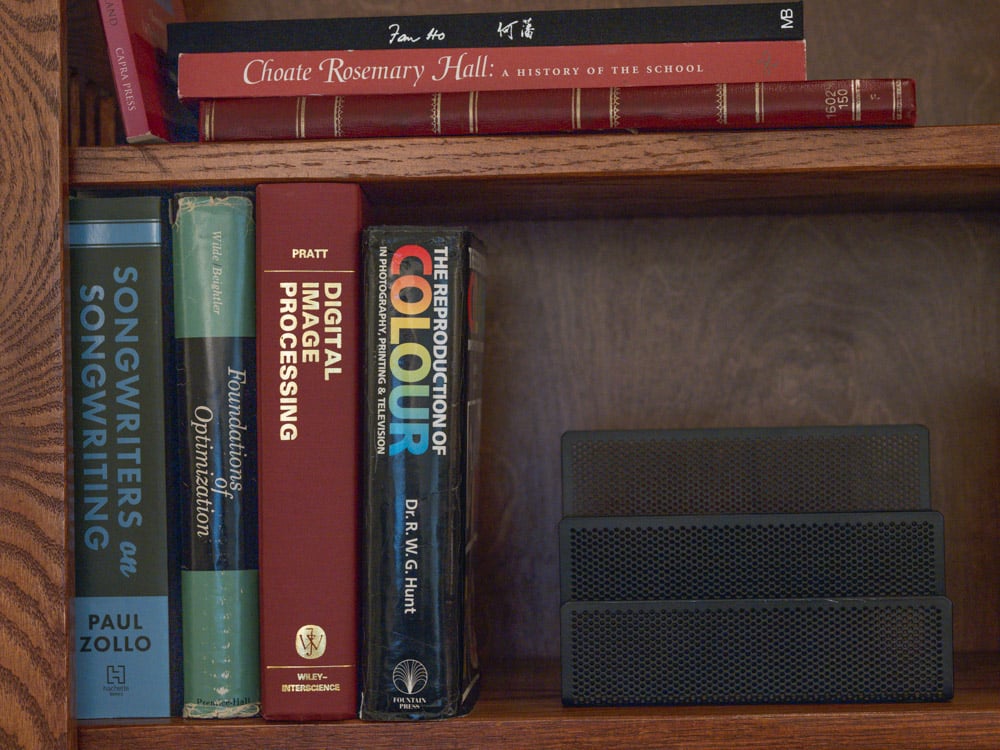
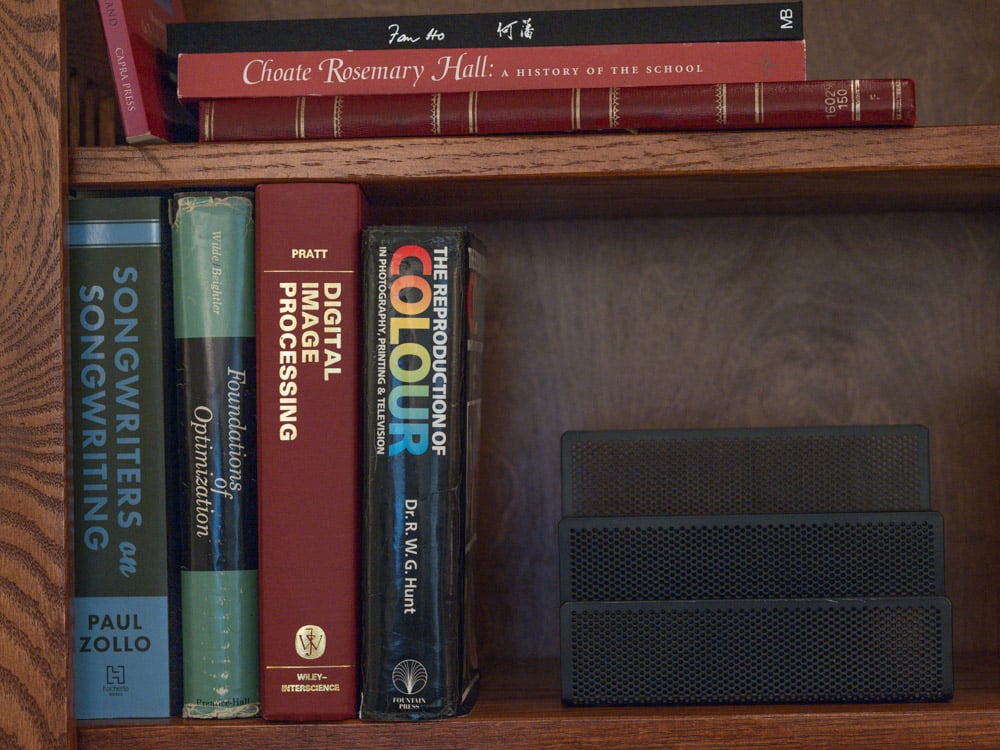
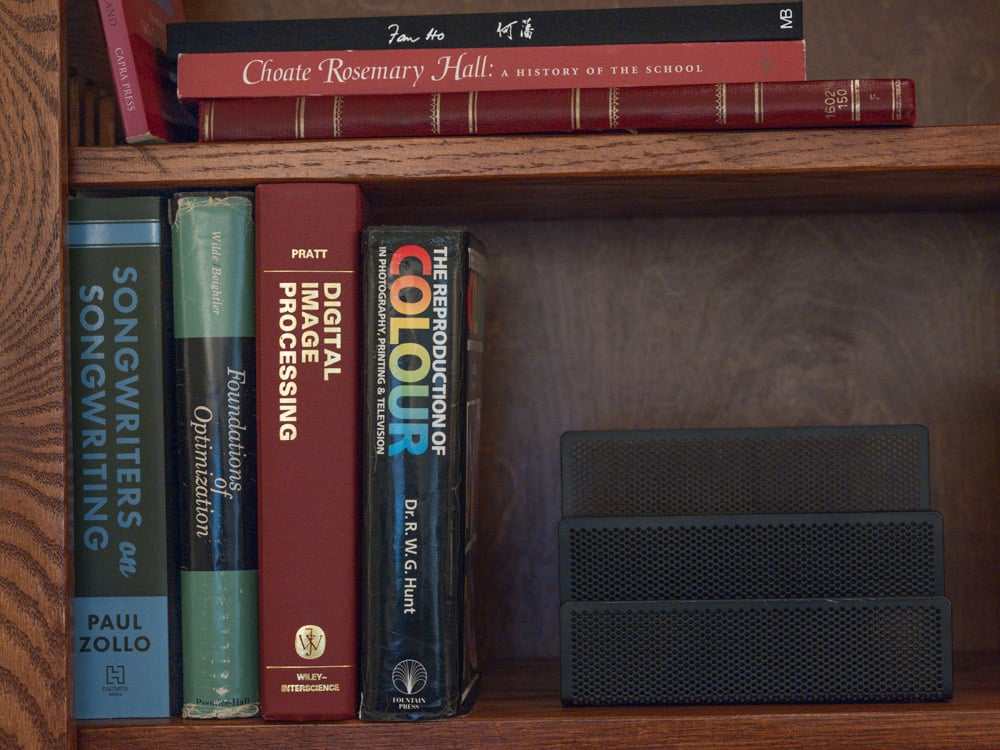
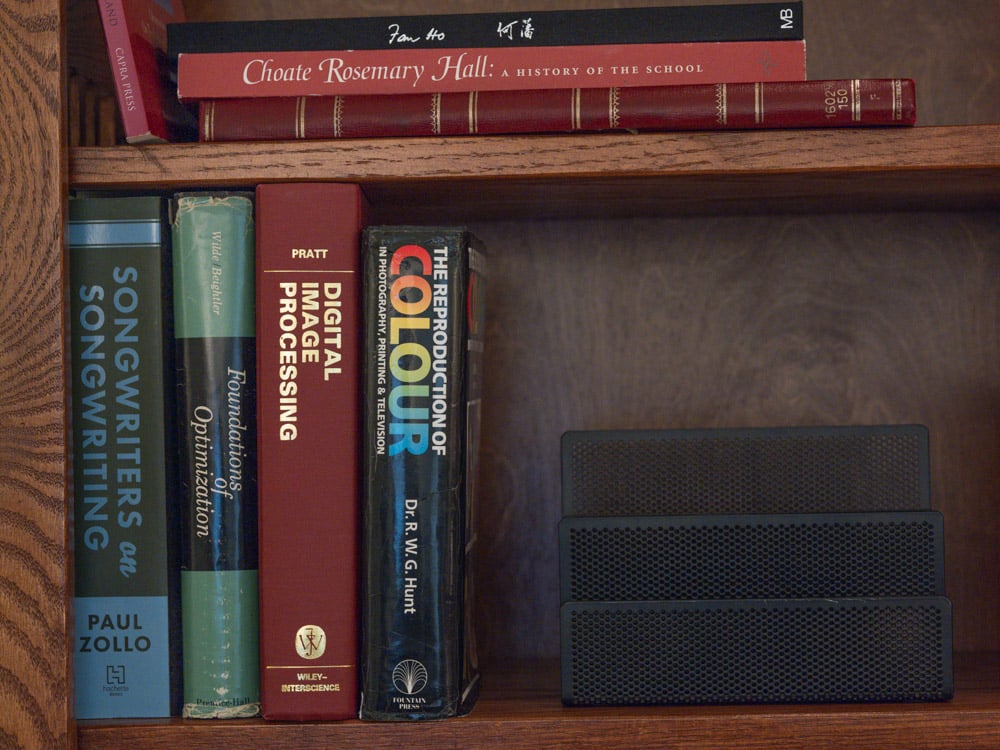
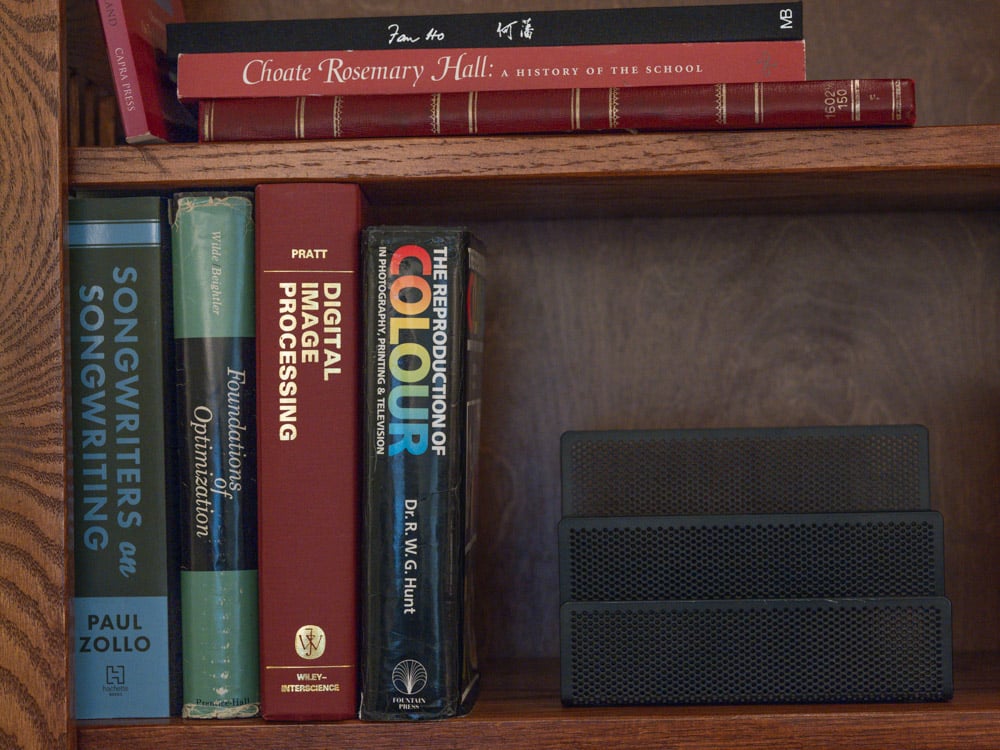
Some crops at about 200%:
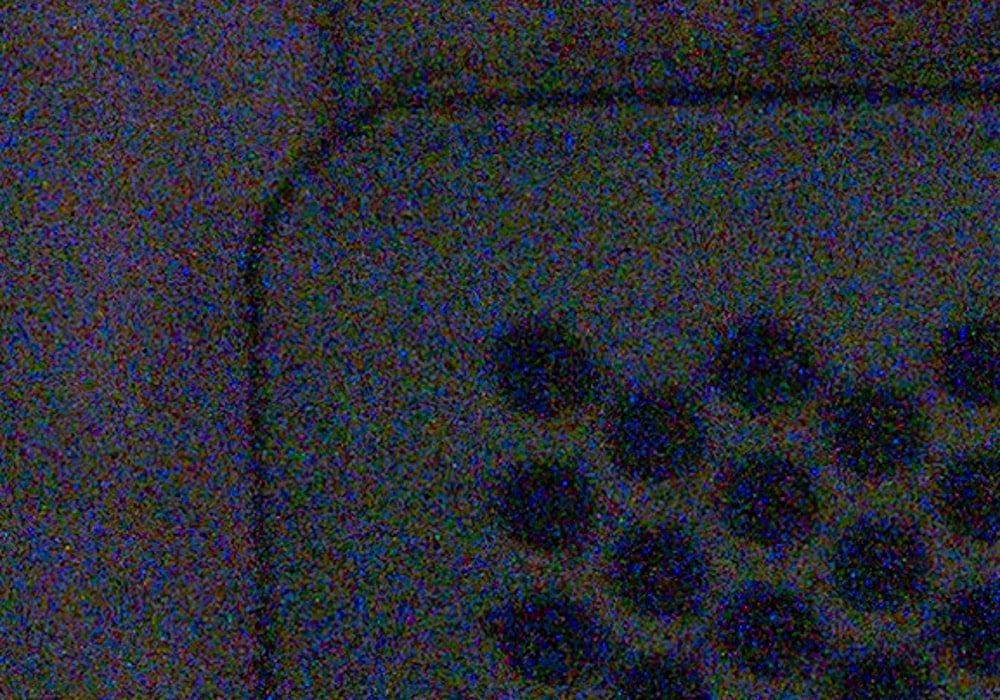
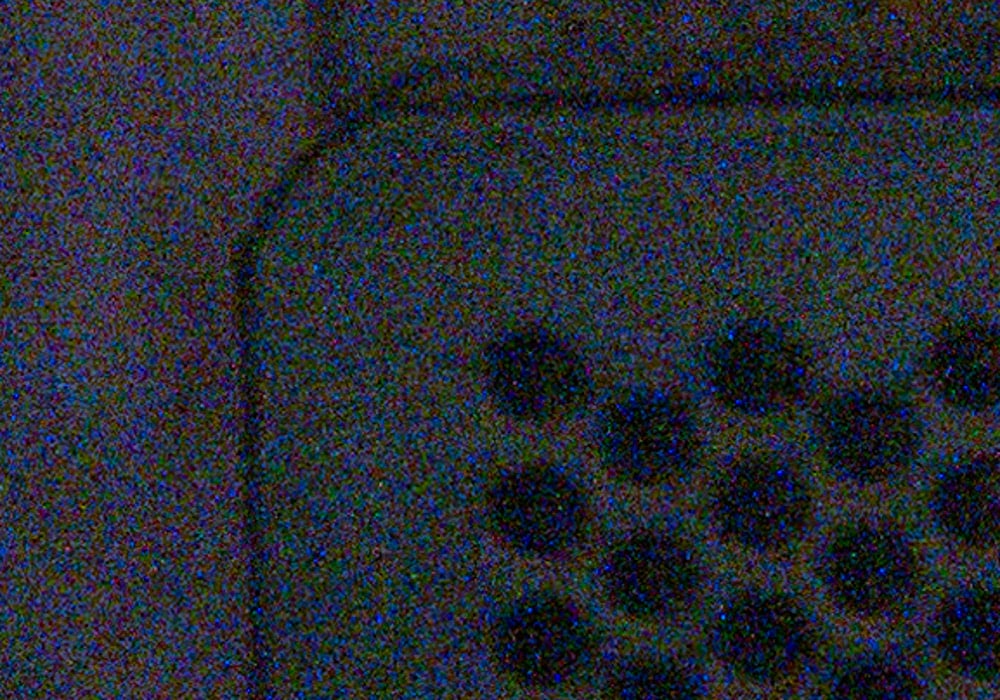
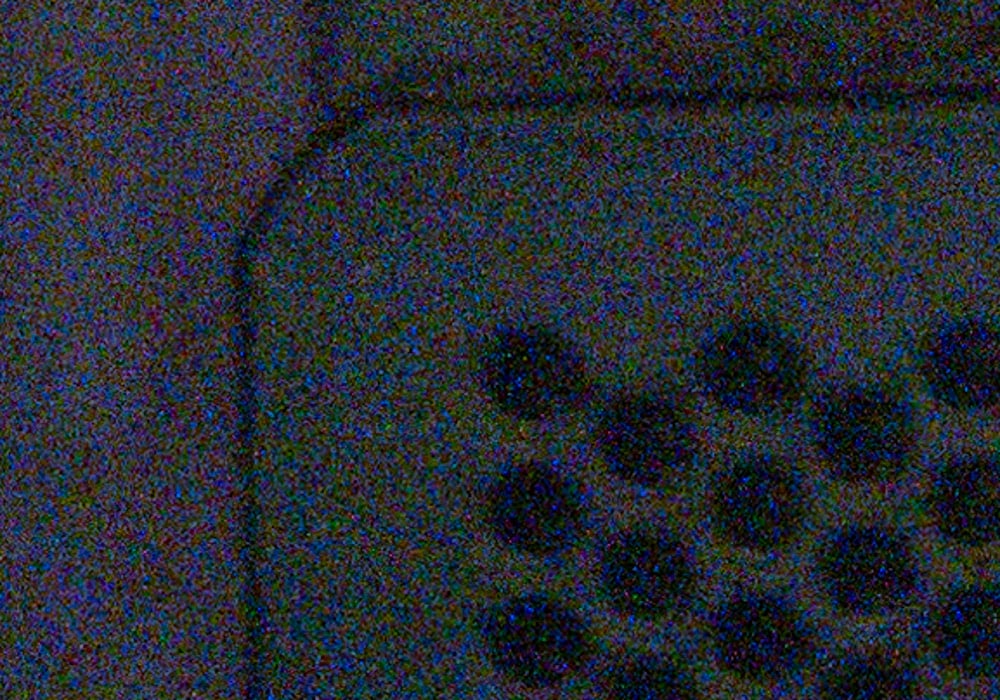
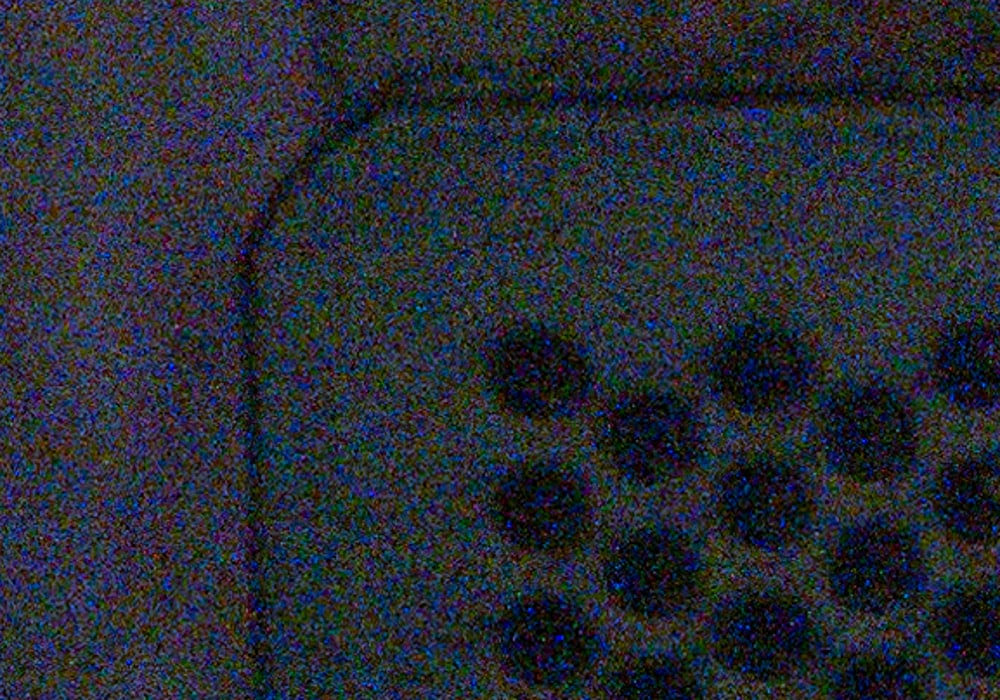
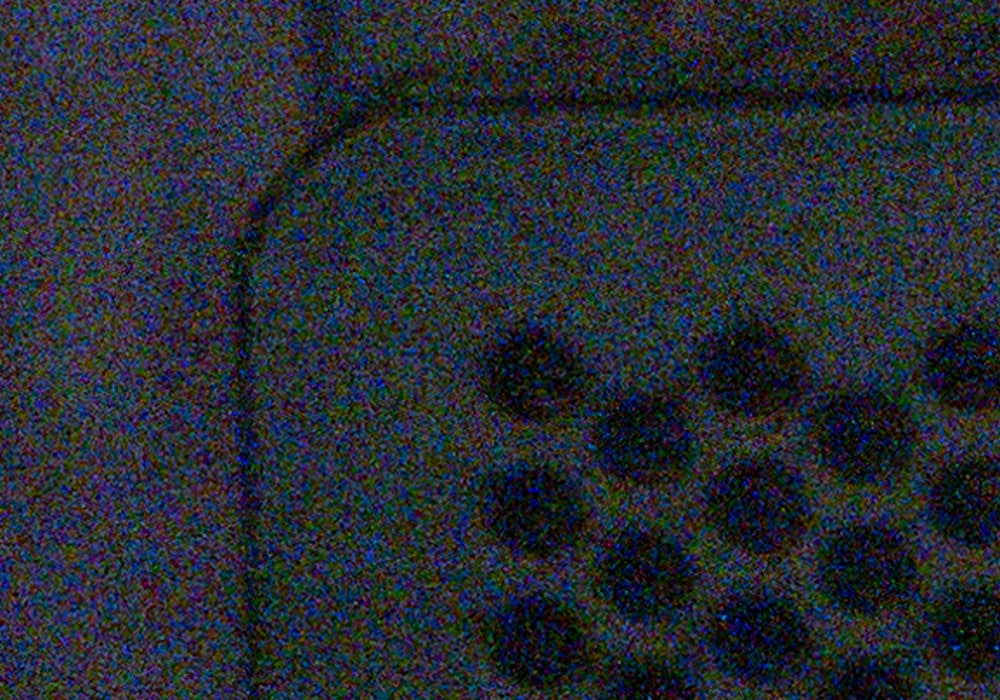
Not that much difference.
Here are some more crops.
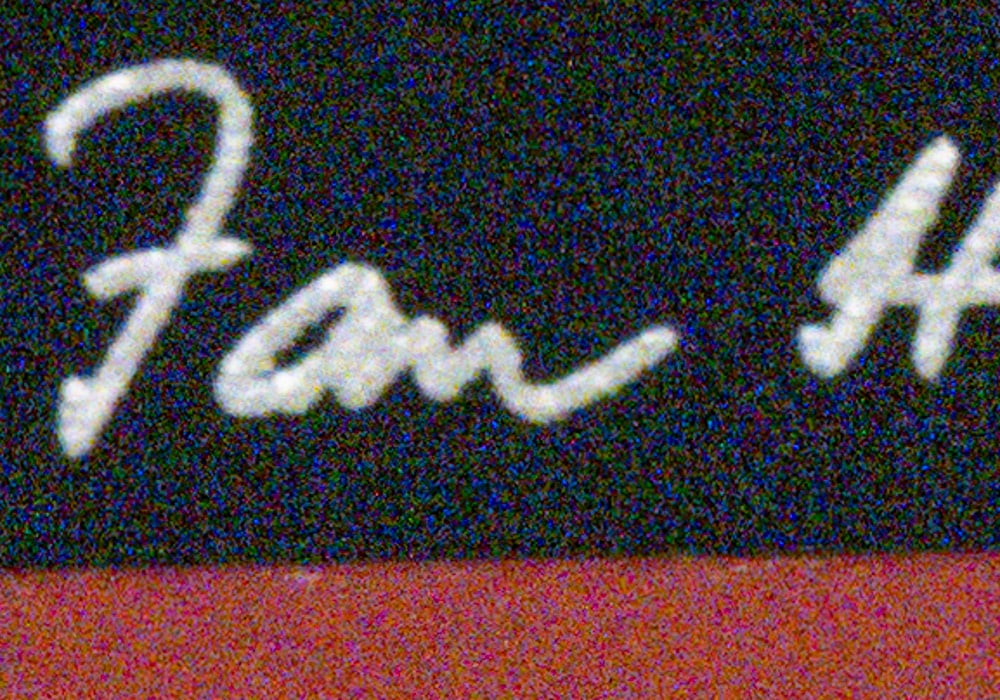
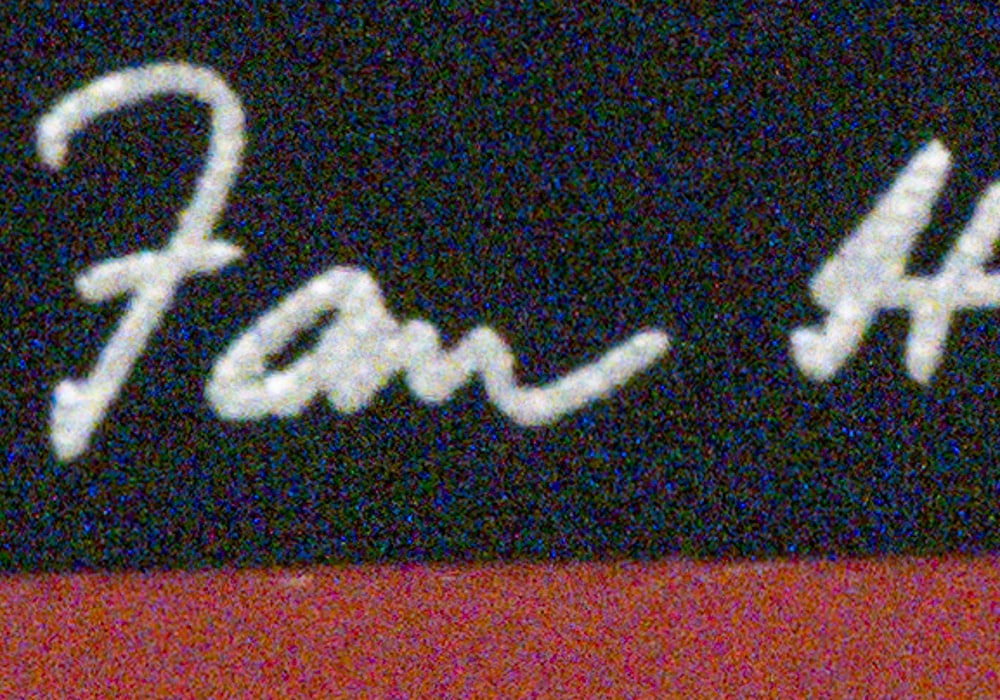
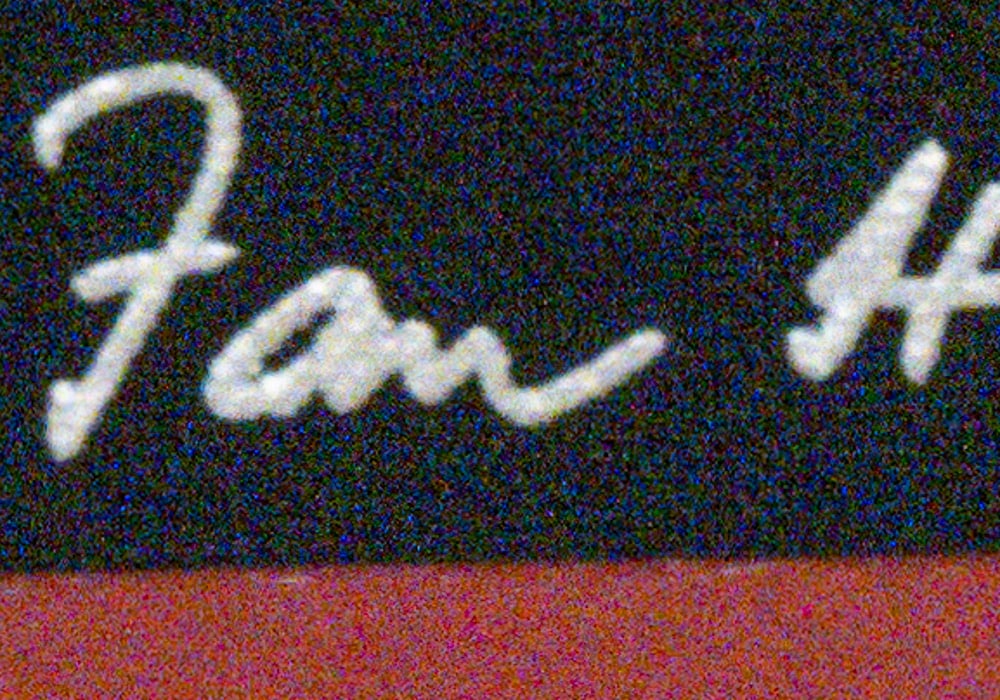

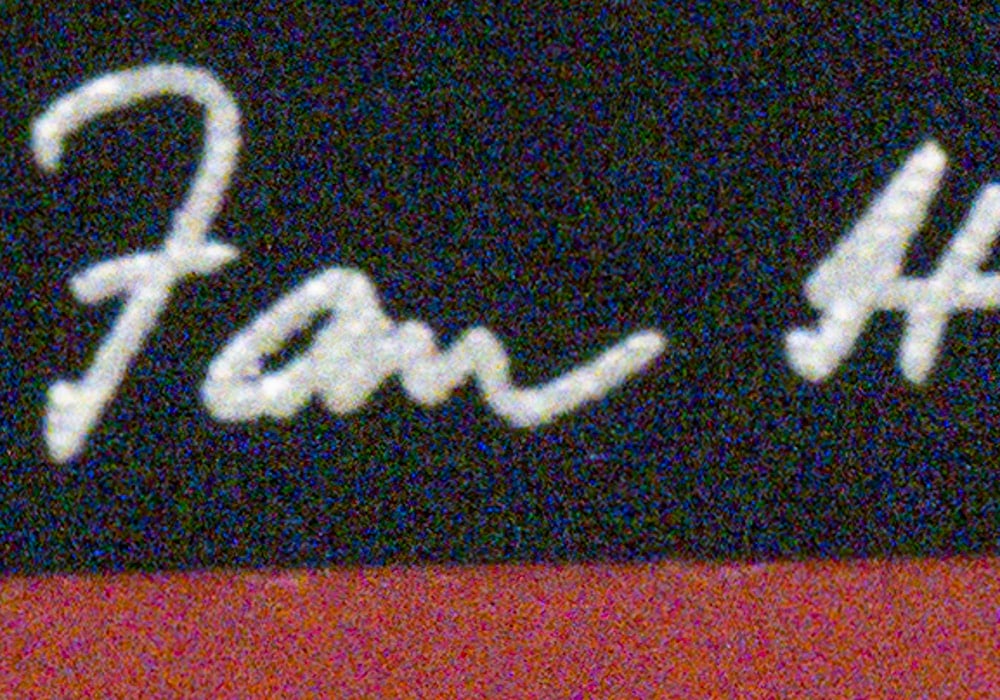
The camera seems pretty ISOless in this range.
Does the exposure strategy you described for the 100s apply to the 100 ii?
https://blog.kasson.com/gfx-100/fuji-gfx-100s-exposure-strategy/
Pretty much, although the GFX 100 II has an ISO 80 option that is unavailable on the 100S.
thank you
Jim,
I am curious about what is meant by ISOless, could you please furnish a definition?
https://improvephotography.com/34818/iso-invariance/
https://capturetheatlas.com/iso-invariance/
A technical way of putting it is that the input-referred read noise in electrons does not change significantly as ISO is adjusted over the relevant range of values.
Does ISO invariant mean the camera uses digital gain instead of analog gain?
Is this how they achieve the isoless look?
No. Using all digital gain would make an ISOless camera, but any camera whose input referred read noise in electrons doesn’t materially change with ISO setting over some range is called ISOless over that range.
Thanks. All of your examples show amazingly similar performance. Were you using the “High ISO NR” setting at any of the ranges you used, and at what (if any) ISO does the High ISO NR setting become useful?
No.
I never tested that. I don’t like to do things in camera that can be done well in post.